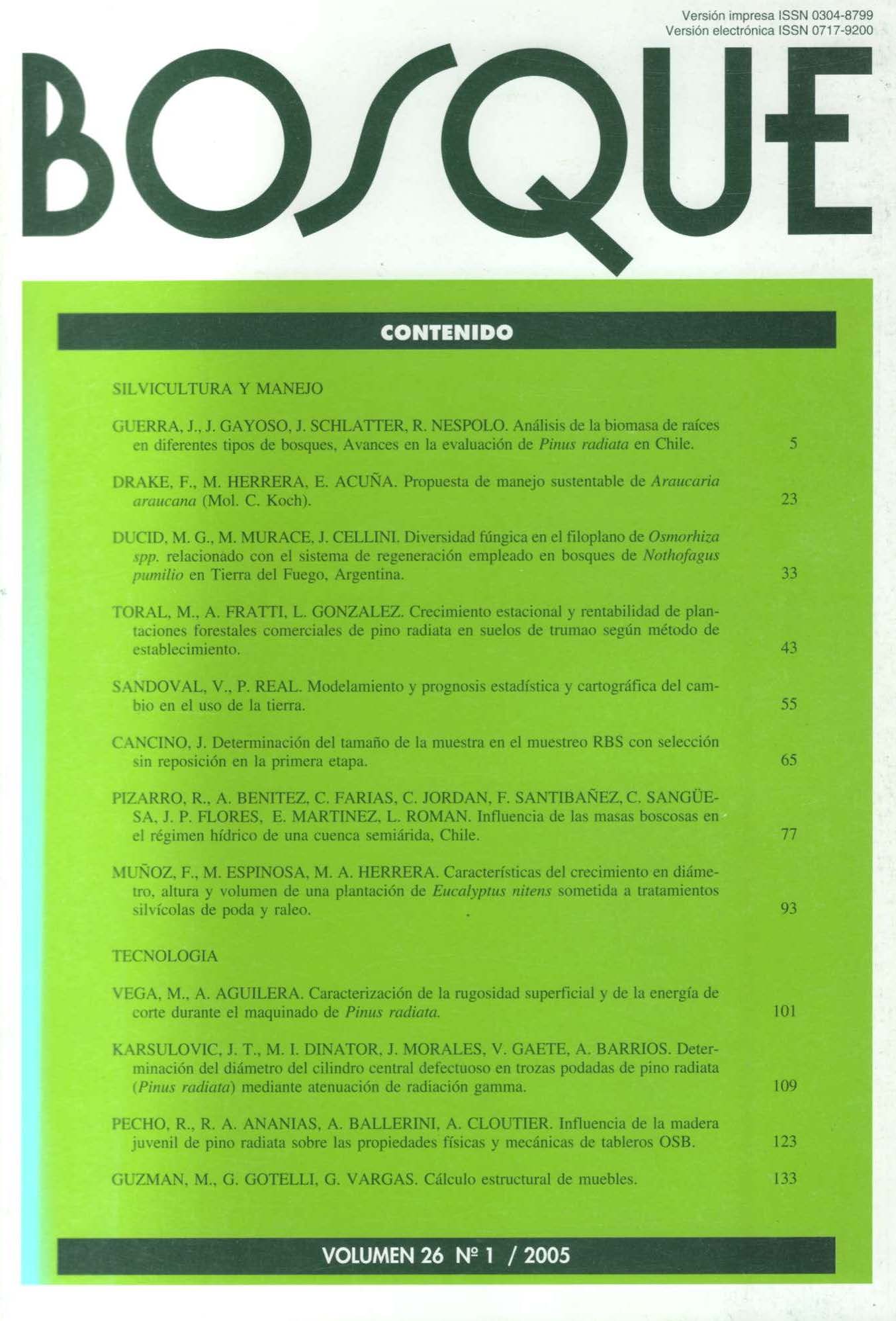Main Article Content
Apr 29, 2005
Abstract
In 1994, Forestal Mininco started a research project to assess the effects of different establishment methods on the seasonal growth and yield of radiata pine (Pinus radiata, D. Don) plantations. Many survey trials were set up during that year using coastal metamorphic, volcanic “trumao”, sandy, and granitic soils. Based on the above, this article focuses on the edafoclimatic characteristics of volcanic “trumao” soils. With this general consideration, three approaches were defined –a Basic or Traditional Method (MB), an Improved Method (MM), and an Optimum Method (MO)– to improve the plantation establishment, initial plant growth development, and to assess the plantation yield corresponding to each method. In each experiment, tree measurements were recorded over a six-year period. Associated climatic and economic information was also obtained. After analyzing the results, it was concluded that these establishment methods have no effect on the seasonal growth of radiata pine. However, in “trumao” soil conditions, the Productivity Index (DAC2 *H) showed two growth peaks: one occurring at the beginning of summer and the other in the middle of the fall. Statistical analysis of the methods determined that, although they had no significant effect over tree diameter and growth height, they do have an effect on the Productivity Index (DAC2 *H). Given the above, the Basic Method applied on “trumao” soils was assessed economically. The results indicate that plantations established on these soils give maximum yields of the products considered in the economic evaluation when harvested at an age of 21 years.


